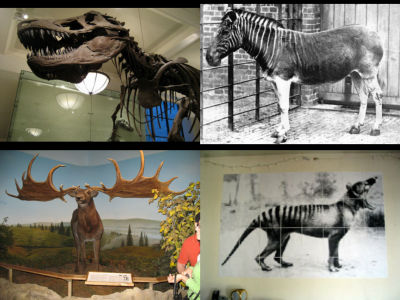Komodo dragons' saw-like teeth are coated with a layer of iron to tear apart the flesh of their prey

Iron-coated Komodo dragon teeth and the complex dental enamel of carnivorous reptiles | Nature Ecology & Evolution
https://www.nature.com/articles/s41559-024-02477-7

Komodo dragons have iron-coated teeth to rip | EurekAlert!
https://www.eurekalert.org/news-releases/1052097
Komodo Dragon Teeth Have Iron Caps For Sharpness, Scientists Discover : ScienceAlert
https://www.sciencealert.com/komodo-dragon-teeth-have-iron-caps-for-sharpness-scientists-discover
The Komodo dragon is a ferocious predator that mainly preys on large mammals such as wild boars, deer, and water buffaloes. Its teeth are saw-shaped, which helps it tear the flesh of its prey, and it has been found that it can inject venom that prevents blood clotting through venom ducts located between its teeth.
A new research team from King's College London and other institutions studied the teeth of an individual named 'Ganas' kept at the London Zoo in order to analyze the teeth of Komodo dragons. Ganas was diagnosed with untreatable degenerative arthritis and euthanized in February 2023, but his remains were preserved and could be subjected to scientific analysis.
The photo below shows the teeth of a Komodo dragon. You can see that one end of the curved tooth is saw-like.

Here's a closer look at the sawtoothed part. You can see that the sawtoothed part is stained orange. The research team used a microscope and spectroscopy to analyze the chemical composition of the Komodo dragon's teeth.

Analysis revealed that the orange color along the sawtooth is due to a high concentration of iron in this area. Other monitor lizards and crocodiles also have iron in their teeth, but not enough to make the orange color so obvious.
In the photo below, you can see that the iron coating on the serrated edges of the teeth is what keeps the tips of the teeth sharp and makes it easier to tear apart the flesh of prey.

'Like carnivorous dinosaurs, the Komodo dragon has curved, saw-like teeth for tearing at prey,' said Dr Aaron LeBlanc, a biological scientist at King's College London and lead author of the study. 'We want to use this similarity to learn more about how carnivorous dinosaurs ate and whether they used iron in their teeth, like the Komodo dragon does.'
Unfortunately, with the technology available at the time of writing, it is difficult to determine whether fossilized dinosaur teeth contained a lot of iron. However, it is known that large carnivorous dinosaurs such as Tyrannosaurus changed the enamel of their teeth themselves to make them sharper. Dr. Leblanc said, 'Further analysis of the Komodo dragon's teeth may reveal iron-coated markers that do not change during fossilization. Such markers would definitely tell us whether dinosaurs also had iron-coated teeth, and would deepen our understanding of these ferocious predators.'
'Komodo dragons are sadly at risk of extinction,' said Benjamin Tapley, a herpetologist at the Zoological Society of London and co-author of the study. 'This discovery not only improves our understanding of how dinosaurs lived, but also helps us to better understand this amazing reptile as we work to conserve it.'
Although the Komodo dragon is designated as an endangered species, Higashiyama Zoo and Botanical Gardens in Nagoya, Aichi Prefecture, successfully attracted a Komodo dragon from a zoo in Singapore in July 2024. The individual, named 'Taro,' is a male with a total length of 2.7 meters, and is scheduled to be open to the public from around the end of August.
The world's largest lizard, the Komodo Dragon, also known as a 'living dinosaur', arrives at Higashiyama Zoo and Botanical Gardens in Nagoya and is scheduled to be released in late August - YouTube
Related Posts:







